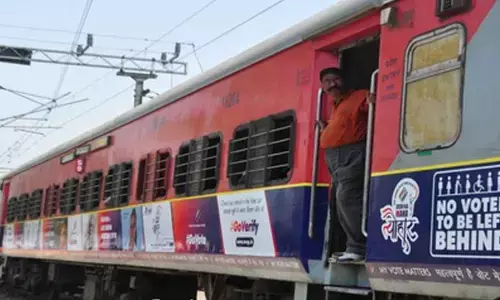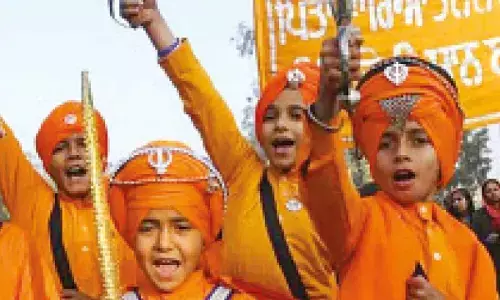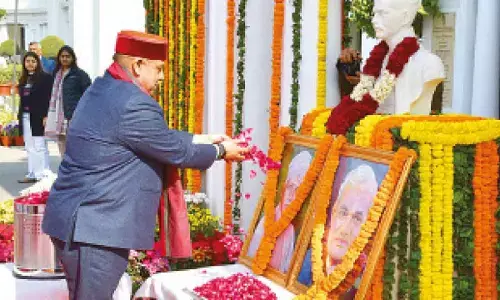A right move at the wrong time

The customary sound and fury was not much in evidence in Diwali celebrations this year, thanks to the orders of the Supreme Court This columnist would be less than honest if he did not confess to experiencing mild disappointment at the absence of the usual dazzling lights and earsplitting sounds
The customary sound and fury was not much in evidence in Diwali celebrations this year, thanks to the orders of the Supreme Court. This columnist would be less than honest if he did not confess to experiencing mild disappointment at the absence of the usual dazzling lights and ear-splitting sounds.
And, if that is what he felt at the age of 70, one can easily imagine the trouble to which parents must have gone to curb the enthusiasm of their children. Noble though their intentions were, and laudable their directions, the judges concerned of the Supreme Court must have been the target of some hearty resentment on the part of the usual revelers. And the cracker-making industry too!
This columnist welcomes the verdict but wishes it had come much earlier than it actually did. Time was when, when we were children, most of the crackers were made at home and were relatively harmless. Accidents were rare. With the passage of time, however, accent on light decreased and noise levels went up alarmingly. 1000 strength “ladi”s became 10,000.
On Diwali, instead of confining themselves to some moderate indulgence in their homes, people have now gone to the extent of even using public roads in utter disregard of the danger of crackers going off underneath a motor vehicle and setting it afire. The Supreme Court in 2005 prohibited manufacture “ladi”s of more than 1000 strength.
The cracker industry, however, did not heed that directive, as a result of which noise pollution became a serious concern. With ‘atom bombs’, as they are called, also joining the party, the situation became increasingly intolerable year after year, until ear drums and weak hearts were in real danger of serious damage. Parents, who worry so much about the toxicity of kids’ toys, hardly bother about the safety of the crackers they burn.
Now the court has (quite literally!) cracked down upon crackers altogether. If one looks at the manufacturing side, the horrors attendant upon the process present a truly frightening picture. Firstly, safety arrangements are inadequate and deaths occur during the process every year.
Child labour is used in the process and attempts by the government to curb it have been thwarted by vested interests, in the name of protecting the livelihoods of those employed.
It was the fact of pollution in Delhi exceeding acceptable limits, that made the court step in with a direction. In a similar context, in the city of Hyderabad for instance, as a consequence of courts’ orders, Ganesh idols are increasingly being made with clay but not with metal and plaster of Paris etc.
Although the courts had been discouraging immersion of the idols in Hussainsagar lake, compliance was poor on account of some organisations taking it as a prestige issue. Even that can be accomplished if only the government were to take it seriously.
Thanks to judicial intervention one can feel certain that, at least from the next Diwali onwards, children will only buy green crackers and, so far as quality is concerned, use only crackers which have a stamp such as that of the Bureau of Indian Standards (BIS). Even manufacturers can be expected to step down production and also concentrate on good quality products.
The only regret is that the court’s intervention did not happen much earlier. In 2015 public interest litigation was undertaken following the death of three children in cracker related accidents. In 2016 the courts, reacting to the increasing levels of pollution in Delhi, ordered the suspension of retail licenses and prohibited entry of cracker material into the National Capital Region.
But, in 2017, that suspension was lifted on account of a feeling that strict standards relating to pollution were lacking. A month later, however, they prohibited the bursting of crackers once again as an experimental measure.
In light of this experience, the fact that this year’s judicial intervention only happened barely 15 days before Diwali is rather unfortunate. Had the courts’ jurisdiction been invoked earlier, everyone, from the manufacturers to the consumers, would have had enough notice and prepared accordingly for a more satisfactory implementation of the orders.
After all, manufacture of crackers begins a year in advance and by the time the court orders were known this year, the material and the products had reached several parts of the country. Perhaps this fact was not brought to the notice of the court.
And the expression “green crackers” will also need to be defined unambiguously. While it is known that emission levels have to decrease, research needs to be conducted into the fixation of precise parameters by which a decision whether given product is green or not can be made in a transparent manner which can be adjudicated effectively in a court or before an appropriate authority in administration.
The Ministry of the Environment and Forests had commissioned a team from the Council of Industrial and Scientific Research (CSIR) and the National Environment Engineering Research Institute (NEERI) to conduct such an investigation and relied on that report.
But, apparently, that team did not involve the Petroleum and Explosives Safety Organization (PSO) which is under the Ministry of Petroleum which, in turn, is the nodal Ministry to regulate the firecracker industry. Clearly there is no clarity yet about what constitutes green crackers and what does not.
Another issue appears to be the fact that results obtained in the laboratory are yet to trickle down to the level of the grassroots level of the industry. And certain ground realities also appear not to have been taken into account.
For instance, the court had earlier said that Barium salt, which emits light, not be used in cracker making but it is a well-known fact that it continues to be used in 60% of the products that are now finding its way into the market.
Another totally different aspect that needs study is the use to which the product of the cracker industry is put after the Diwali season is over. Since it cannot be preserved till the next season, the traders usually dispose it off to organisers of events such as marriages, religious ceremonies, fairs and festivals.
The product is freely used on these occasions as the ban order of the court does not apply to them. The risk, however, remains and accidents are not unknown, sometimes resulting in injury and even death.
Thus, on the whole, it would appear that it is much better to insist upon the industry to establish safety measures at the time of the manufacture itself rather than rely merely on the issue of safe use of the product after its release into the market.
When all is said and done, one should feel happy that the judgement of the Supreme Court has prepared the ground for a safe Diwali next year. It is rather disturbing that in some quarters the verdict is being looked at from the point of view of the Hindu religion and a colour of interference being attributed to it.
In this context, it is necessary to remember that, strictly from the Hindu ritual point of view, it is enough on the occasion of Diwali to light “dias” and to worship Goddess Lakshmi (in some areas Goddess Kali).
The use of crackers is a feature borrowed from China and is in fact not observed in some places such as Kerala during Diwali. What the courts in India have sought to regulate is not the lighting of “diyas” or the worship of Goddess Lakshmi but only the use of crackers-for the reason that noise and atmospheric pollution levels are exceeding acceptable levels.
This columnist, in fact, would like to see public interest litigation being undertaken by activists, and entertained by courts, also in regard to noise pollution from other sources such as marriage processions, political meetings, prayers in religious places, recitals conducted in places of worship et cetera. To quote Shakespeare’s Hamlet, “’tis a “consummation devoutly to be wished”! (The writer is former Chief Secretary, Government of Andhra Pradesh)

















